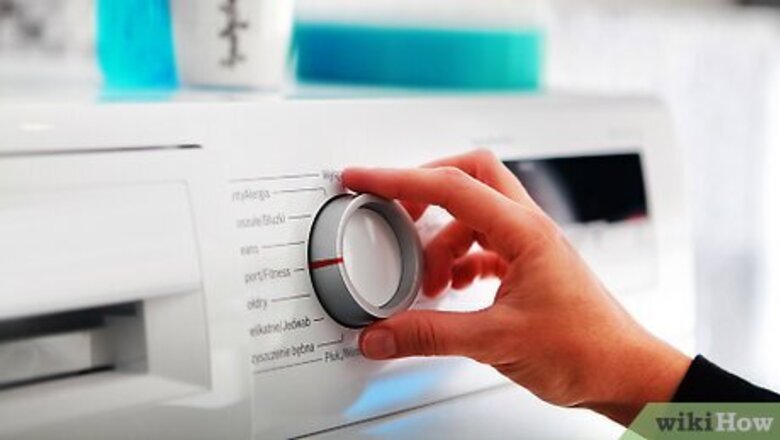
views
Setting up Your Equpiment
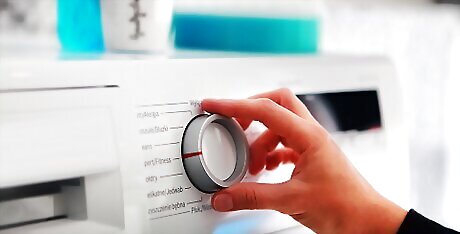
Wash the curtains. Unwrap the curtains if they are still packaged. After that, you should wash your curtains on a cold water delicate cycle and then dry them with low heat or no heat on a gentle cycle. Beyond removing residue from your curtains, washing will also make stubborn wrinkles less difficult. If your curtains are especially dirty, as might be the case if you're swapping in old curtains that have been in storage, you may want to wash them in warm water, but only if the label recommends doing so. Generally, you should wash your curtains in cold water. This will help prevent fading and shrinkage in your curtain fabric. For best results, you should use detergent intended for delicate fabric. With curtains that have dark or prominent colors, you might also want to use detergent formulated to keep colors from fading. If care instructions are included with your curtains, keep these. Some kinds of fabric or styles of curtain may require special treatment. If yours do, this information will be included in the care instructions. If there aren't care instructions on the packaging or a separate sheet of paper, look for a small tag on your curtain. This should have information like the material your curtains are made of and recommended washing and ironing procedure.
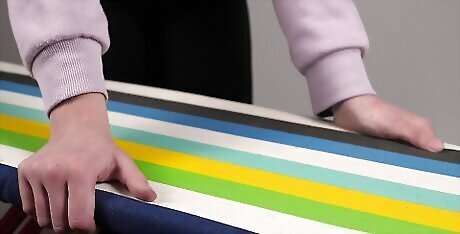
Set up your ironing board. Much like you've laid your curtains out close to where you intend to hang them, you'll also want your ironing board set up close to the hanging location. This will create less opportunity for wrinkles to form while transporting your curtains between the ironing and hanging location. If you're having trouble setting up your ironing board, look for a catch or button underneath the board. Many boards have this feature to prevent the legs from extending while you are moving it. You may find it easiest to set up your ironing board in its tallest position to make transferring your curtains from the board to the curtain rod easier.
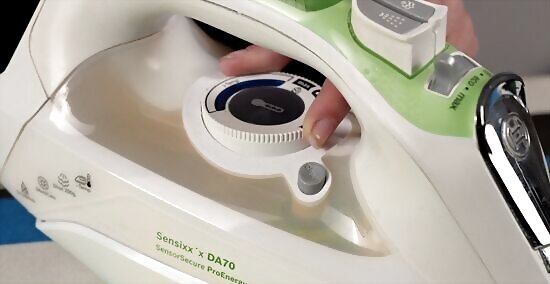
Set up your iron. Depending on the age and brand of iron you're using, the time it take to heat up can vary. In many cases, five minutes should be sufficient for your iron to heat up. Then turn your iron's dial to the appropriate fabric setting. Most irons have a dial with which you can select a setting for the kind of fabric you'll be ironing. Common fabrics that are likely listed on your iron include cotton, linen, and synthetic fabrics. Check the tag on your curtain or its care instructions to determine the fabric you'll be ironing, and set your iron to that fabric. Never lay your iron so the metal, heated part of the iron rests on your ironing board. This can cause your iron to burn the board.
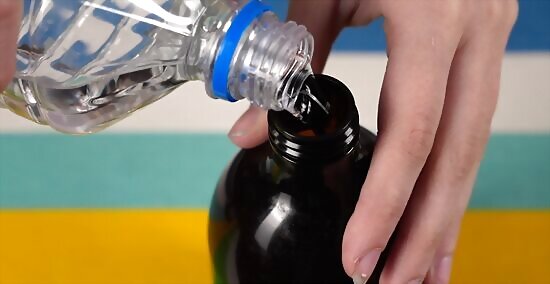
Prepare your spray bottle. A little spritz of water to dampen the curtains will help your iron work its magic. Regular water from your faucet should work fine for this purpose, but if you have hard water, you may want to use distilled water to prevent discoloration in your curtains from mineral buildup. Feel free to use the spray feature on irons that have one in place of a spray bottle. However, a spray bottle will come in handy if you have to spot treat wrinkles that form after you iron.
Ironing Your Curtains
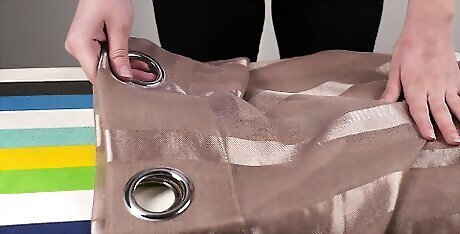
Lay out your first curtain segment on your ironing board. There are many ways you can lay out your curtain, and you may find that some work better for you than others. To prevent missing wrinkles and make hanging the curtain easier on yourself, you may want to work from the top of the curtain down. You can identify the top of the curtain easily by looking for the curtain rod loops or pockets. When ironing from one end to another, you'll likely need to reposition your curtains several times throughout the process.
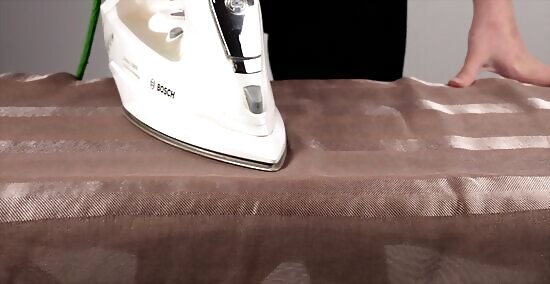
Iron across the width. If your iron doesn't have a stream or spray feature, take your water bottle and spray the curtain with clean water a few times until it is damp. Pass your iron back and forth over the width of the curtain until wrinkles are smoothed and work your way toward its bottom. It's unlikely you'll be able to iron your entire curtain on your board all at once. As you work farther down the curtain, you can adjust your curtain so that the already ironed top portion hangs off the end of your ironing board. Continue until the ironed portion almost reaches the floor. It's very common for a curtain to wrinkle after ironing. By allowing your ironed curtain to hang loosely off the edge of your ironing board until it almost reaches the floor, it's unlikely bunching or re-wrinkling will occur.
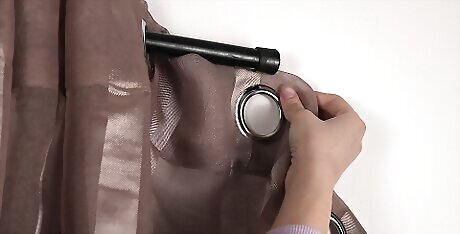
Hang your segment of curtain. Roughly one half to two-thirds of your curtain should be ironed at this point. By hanging the ironed portion of your curtain now, there'll be less of a chance it will wrinkle and you'll still be able to finish the un-ironed part. To do this you should: Disassemble your curtain rod. Feed the rod through the tabs, pockets, or hanging loops at the top of the curtain. Hang the curtain and rod in place. The remaining un-ironed part of your curtain should hang low enough for you to finish the ironing. If you have a low ironing board, it may be difficult to iron enough curtain to allow the un-ironed remainder to reach your board after hanging so you can finish ironing it. In this case, you may want to bring a stool or something you can drape the ironed part of your curtain over to keep it from wrinkling while finishing the entire curtain. Then you can hang it.
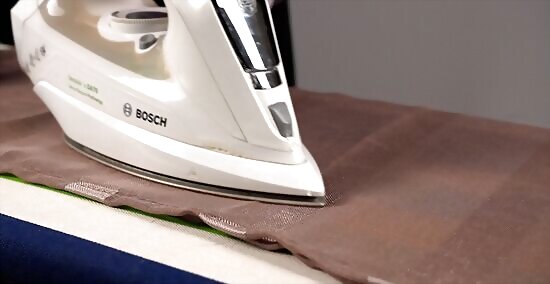
Finish the curtains. As you continue to iron your way toward the bottom of the curtain, you can allow ironed parts to fall into position to hang with the upper ironed portion. Try to avoid sharp angles that causes the fabric to fold or bunch. This could re-wrinkle your curtains. After you've finished, you can spot treat remaining wrinkles. You can do this easily with your spray bottle. Simply spray any remaining wrinkles with water, smooth the fabric with your hands, and let it dry. This technique works well for removing light wrinkles.
Ironing Delicate Curtains
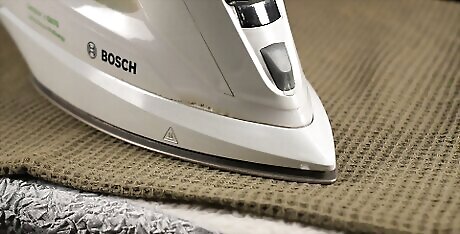
Evaluate your curtain fabric. Delicate, embellished fabrics can be damaged from the heat of your iron. However, for most unembellished curtains, you shouldn't need to do anything special to iron out wrinkles. To protect delicate fabrics and embellishments, you can overlay a pillowcase or sheet over the embellished area you'll be ironing to protect it from direct heat, and then iron as normal. If you're concerned that the heat setting for your iron may be too high, a pillowcase/sheet buffer is also a good idea.
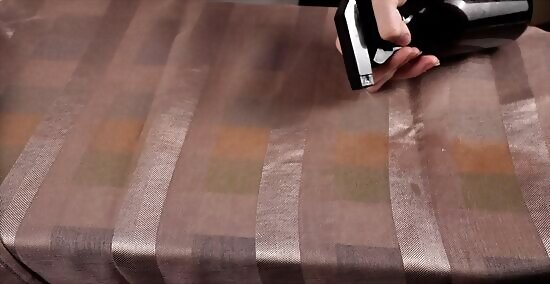
Use starch when recommended. Many curtains will not require starch, though easily wrinkled delicate fabrics may call for it. Starch will make your fabric crisp and less wrinkle prone. Your curtain instructions should indicate if a starch solution should be used on your curtains. Many modern forms of starch come premixed in a spray can. For this kind of starch product, you should follow the directions as indicated on its label. Some starch comes in powdered form and is intended to be mixed with clean water in a spray bottle. You can make your own starch spray with one heaping tablespoon of corn starch and one pint of clean water. Mix the solution well before using.
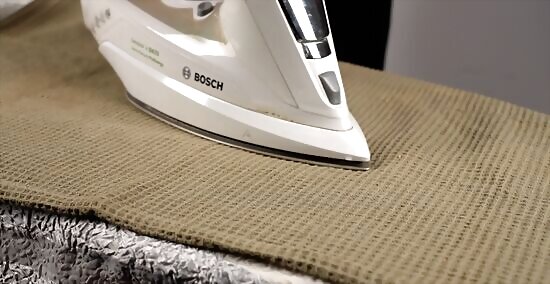
Iron the back of the curtain for further heat protection. With especially delicate or expensive curtains, your pillowcase/sheet heat buffer might not be enough to fully protect your curtains. You can still iron your curtains safely by using your pad and ironing the back of the curtain rather than the front.
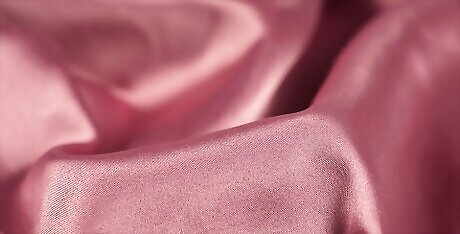
Take extra care with silk or satin curtains. These kind of fabrics are especially prone to heat damage. When ironing these, you'll be sure to want buffer fabric, like a pillowcase or sheet, in between the iron and the curtain fabric. For extreme wrinkles, spray the curtain fabric with water first, put your buffer fabric in place, and then iron.
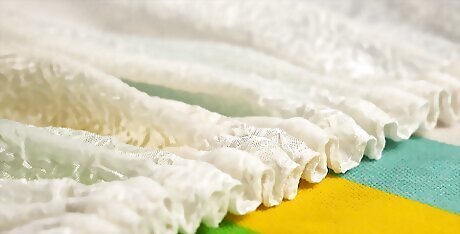
Iron pleats to make them more pronounced. Gather pleats together and iron them down in a way that follows the design of the fabric. This will make the accent of the pleat look crisper and more sharply defined. A spritz of water from your spray bottle can help your iron remove stubborn wrinkles in the pleating.













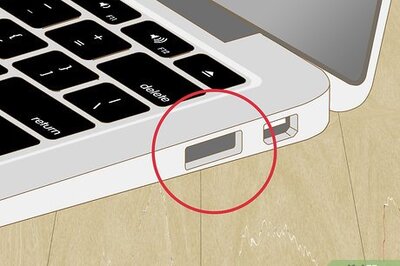

Comments
0 comment